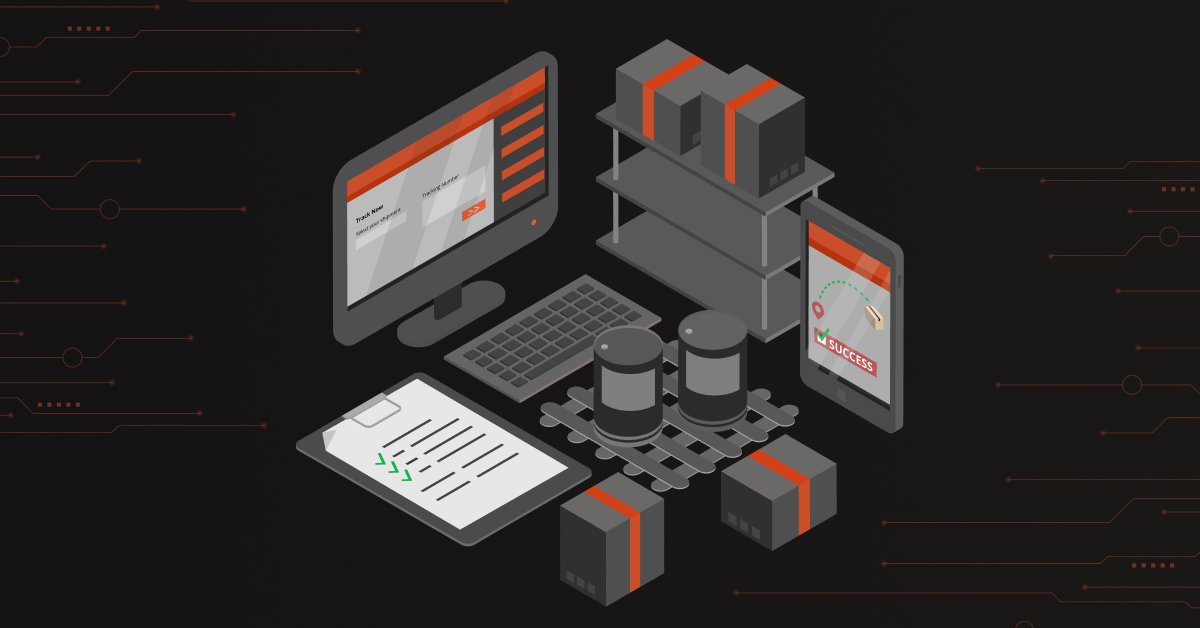NetSuite inventory management may make the difference between making and losing money for your company. The method through which firms organize, track, and handle items in their warehouses is known as warehouse inventory management. Raw materials completed products, and objects in the manufacturing process are all examples of these goods.
To satisfy consumers and fuel growth, manufacturers, wholesalers, distributors, retailers, and online sellers require powerful warehouse inventory management. Inventory is frequently one of a company’s most valuable physical assets, and it represents a considerable investment of working capital.
NetSuite inventory management in warehouses and distribution centers is concerned with products stored in these facilities. Some warehouse management systems can also handle merchandise in stockrooms and on shop shelves. From a legal and accounting standpoint, products in transit are legally part of your inventory if the conditions of sale stipulate that ownership transfers upon delivery, but these are not typically included in warehouse inventory management systems.
Order picking and packing, counting inventory amounts and placements, and predictions of how much inventory you’ll need in the future are all made more accurate and efficient with effective warehouse inventory management.
Inventory management entails many steps, including:
- Procuring goods.
- Keeping an accurate inventory count.
- Putting objects in their proper places.
- Order management.
- Picking and packing direction.
- Documents such as invoices, bills of lading, and order sheets are processed.
- Returns management.
- Orders and inventory are being audited.
- Turnover, demand, and reorder analysis and forecasting.
Contents
Inventory Management Challenges
As you can see, effective warehouse inventory management is difficult to implement. The difficulty of supplying items promptly when you have several sales channels, managing competing requests from various buyers and store locations, and keeping track of your customers’ and employees’ needs are among the most urgent problems with NetSuite inventory management.
The most pressing problem, according to many inventory managers, is attaining inventory count accuracy. The correctness of your inventory influences your ability to fulfill client orders and maximize profitability. You may accept a customer order that you cannot fulfill if you believe you have an item that you don’t.
Accurate inventory, on the other hand, is important to a company’s financial health. If you keep too little inventory, you’ll lose sales to your competitors since you won’t be able to fulfill consumer demand. However, if you keep too much inventory, you’ll lose money since you’ll be wasting cash, taking up too much real space, missing out on chances, and maybe having to lower your prices.
The correctness of your inventory influences your ability to fulfill client orders and maximize profitability. You may accept a customer order that you cannot fulfill if you believe you have an item that you don’t. You may order more than you require if you feel you do not have an item.
It’s difficult to know how much inventory to have on hand. Historical patterns can be used as a yardstick. However, there is a complicated interaction of other elements at work as well. These factors include changing demand, competitive behavior, product perishability, innovation, sales cycle length, seasonality, production time, and industry trends.
If you make cold beverages it’s a good bet that you’ll want to have fewer in stock in the winter than in the summer. Consider how difficult this calculation becomes when you create oil drilling equipment that takes months to develop and demand from exploratory operations varies with the price of oil, the rate of discovery, regulatory changes, and other factors with NetSuite inventory management.
Advantages of Warehouse Inventory Management
Better inventory management results in more productivity, faster picking, cost savings in time, money, and labor, improved accuracy in orders and inventory counts, lower losses, happier workers, smoother operations, and omnichannel success.
Many inefficiencies are addressed by applying technology to the difficulties of warehouse inventory management, including:
Mistakes and late shipments: Human mistakes in choosing goods may be costly for a warehouse in terms of wasted time. When a warehouse sends those products, the cost increases due to returned shipments, a loss of consumer trust, and hurried orders. With barcoding, QR tags, and other sensor technologies, as well as bin management, the software may assist eliminate most, if not all, of these errors, ensuring warehouse personnel retrieves the appropriate inventory at the right time, independent of training.
Counting Errors: Annual or double-annual inventory inspections in which the whole workforce gathers to look over inventory through manual or physical counts should be phased out. Manually doing these counts increases the possibility of mistakes. And what about the remainder of the year? Are businesses OK with having an accurate inventory count just some of the time? Using automated systems with scanners that centrally store data and update in real-time assures accurate counts while eliminating unnecessary administrative expenses and inefficiencies.
Overstock/Understock: Warehouses have a quandary in determining how much inventory to keep on hand. Carry too much inventory, and your cash will be locked up in non-selling items. Furthermore, there are expenses associated with storing and managing such inventory, particularly products with a short shelf life. Carrying too little, on the other hand, puts the company at danger of stockouts and an inability to fulfill consumer demand. Modern inventory management systems, particularly those that are strongly connected with the ERP system, may aid in forecasting and demand planning, ensuring that the appropriate quantity of inventory is on hand.
Insights and Benefits With NetSuite Inventory Management
What are the benefits of using Netsuite Inventory Management?
Netsuite Inventory Management Cloud-Based Benefits:
Key Differentiators & Advantages: When opposed to on-premise solutions, NetSuite Inventory Management may be deployed as a cloud-based solution. Users can safeguard vital papers, view information from anywhere, and keep software up-to-date without downtime by utilizing the cloud.
Improved Accuracy: Users may establish product spaces that complement their operations by utilizing NetSuite Inventory Management’s organizational features. Having a standard inventory plan in place can help with fulfillment accuracy and product location.
Increased Customer Happiness: Through smooth procure-to-pay and precise product tracking, NetSuite Inventory Management may improve customer satisfaction. Users can reduce fulfillment times, connect with clients, and follow through on commitments.
Automate Activities: This platform can automate some of the time-consuming manual tasks associated with inventory management. Users may spend more time on critical planning and forecasting activities by freeing up precious personnel resources.
How to Effectively Organize Warehouse Inventory With NetSuite Inventory Management.
A well-organized inventory helps to simplify counting, storing, picking, and pulling. The ideal approach to organize your warehouse is determined by your unique requirements. Here’s a step-by-step guide to analyzing your space and needs before developing the ideal organization.
Obtain Information: Whether you are moving into a new location or renovating an existing one, begin by obtaining plans or measuring the room yourself. Then ask questions such as, “How much room do staff require to execute their tasks properly?”
How do current and future trends in our industry influence the layout?
Is there a big rise in orders since the space was designed?
Will a significant new product with different needs be introduced?
Will certain inventory techniques, such as wave picking and cross-docking, affect the layout?
How can you improve your operation’s efficiency with NetSuite inventory management?
Strategic Inventory Layout: Slotting, or assigning a place for items, may be done in a variety of ways, but make sure that your most popular products (based on an ABC analysis) are easily accessible. Product retrieval from inventory is the most labor-intensive function in manually operated warehouses and the most capital-intensive operation in automated warehouses. As a result, increasing order picking productivity is a major goal. Many warehouse professionals advise you to place the best-selling items closest to the packaging area. If you work in a seasonal sector, these items will change with the seasons. Don’t forget to utilize slow to make the most of your vertical space.
Select Storage Carefully: Choose racks, shelves, containers, and bins that are adaptable, allow for optimum traffic flow, and are compatible with forklifts. The type and quantity of storage you need will be determined by your business and goods. Consider if you want to utilize a dedicated/fixed bin system (in which a specific piece of inventory is stored in a specific bin) or a random/floating bin system (in which you put an item in any available bin). Space efficiency, accessibility, and the quantity of handling are the considerations. Fixed bin systems are projected to take up 65-85% of the available area.
Warehouse NetSuite Inventory Management Best Practices
Embrace technology: Wherever practical, automate. Although warehouse automation is costly, the advantages of automated storage and retrieval systems (AS/RS) include the ability to update inventory numbers in real-time, decrease mistakes, reduce labor expenses, and enhance space efficiency. Voice-guided picking is now available, in which workers get picking instructions via software-connected headsets and wearables such as Google Glass. Partially automated processes are common in businesses. Whether you employ a man-to-goods system, in which personnel travels around the warehouse filling orders, an AS/RS system, or a hybrid, the method you choose will have a significant influence on your warehouse inventory management.
Quality Control Matters:
Double-check order accuracy to prevent returns, customer complaints, and order cancellations. Order pickers may verify an SKU with a barcode scanner when selecting the item, and packers then repeat the process. You want to balance speed and accuracy, so choose the checkpoints based on where your warehouse has the most frequent errors.
Keep the Inventory Area Tidy:
Build-in time at the end of every shift for clean-up. Make sure aisles are clear, floors are clean and there are no slipping or tripping hazards. Put the equipment away. These practices help maintain productivity, prevent injuries and accidents and help employees do their jobs well.
Set Balanced Stock Levels: You may calculate maximum, minimum, average, and reorder levels for inventory by analyzing your sales, lead time, and turnover statistics. This reduces expenses, reduces waste, avoids order delays, and maximizes warehouse space use.
Summary
With NetSuite’s WMS and IMS, you can create a more efficient warehouse.
Warehouse inventory management software is required for effective inbound and outbound logistics management. Software may be tracked throughout the warehouse, all the way down to the bin level, using warehouse management software. Through multi-location inventory, bin tracking, and cycle counting, NetSuite provides easy inventory management features. The WMS module adds numerous industry-leading capabilities such as mobile RF barcode scanning, strategy creation for putaway and pickup, job management, and returns authorization receipt to assist streamline your warehouse operations with NetSuite inventory management.
We have a dense corpus of information on everything related to NetSuite which you can find here. I hope you found this helpful, ask us in the comments below if we missed something and we’ll get back to you.
Here you’ll find all the information you need to manage your internet distribution company. You can also save this page to your favorites for quick access to the most recent information.
Tell us something you’d want to learn more about on LinkedIn.
Thank you for reading this far.




